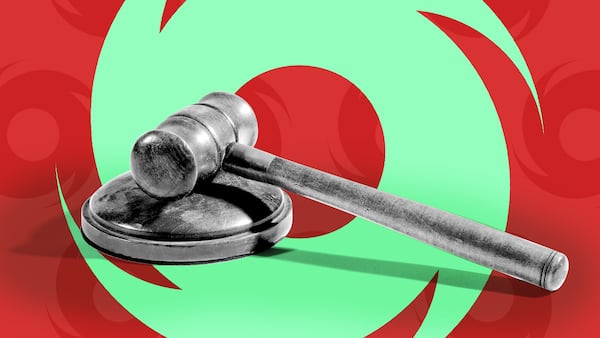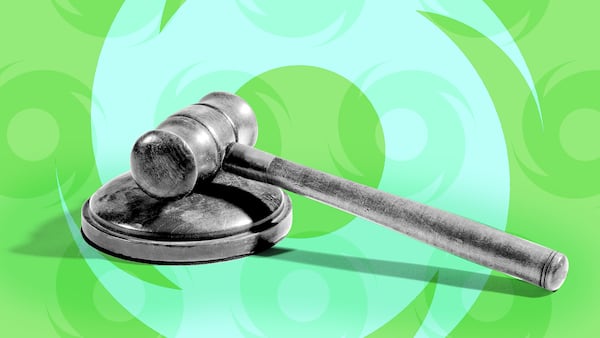- Tornado Cash only "seems immutable," co-founder Roman Semenov said in 2022.
- Prosecutors unveiled a tranche of private messages between Roman Storm and his co-founders and investors on Thursday.
- The defence began its can by calling an Ethereum core developer.
Ever since he was arrested in August 2023, Tornado Cash co-founder Roman Storm and his attorneys have argued he was powerless to stop cybercriminals from using the protocol to launder stolen crypto.
New evidence unveiled in his criminal trial Thursday suggests one of the protocol’s co-founders once thought otherwise.
“The protocol seems immutable, but everyone must use the proxy,” Storm said in February 2022, according to a government translation of a voice message from co-founder Roman Semenov.
“We kind of took back power this way. This could somehow highlight re-centralisation,” he said.
Tornado Cash was created by developers Roman Semenov, Alexey Pertsev, and Roman Storm
Prosecutors have charged Storm with conspiracy to commit money laundering, operate an unlicensed money-transmitting business, and violate US sanctions. He faces more than 40 years in prison.
Should have, could have
That Tornado Cash is immutable — that nobody, not even its creators, could alter its design — has been central to Storm’s defence. And it has galvanised crypto proponents, who say the software engineer is being prosecuted for merely writing code, a form of speech protected by the First Amendment.
A guilty verdict could have far-reaching consequences, according to Storm’s supporters and a leading civil liberties organisation, as it would imply that many developers of privacy-enhancing software can be held criminally liable for their work.
Tornado Cash makes it impossible to trace crypto transactions on Ethereum and several other blockchains.
The most important component of the protocol is the pools into which users can deposit crypto.
Depositors receive a code they can use to withdraw their crypto into a fresh wallet, severing the chain of transactions that makes it possible to follow the movement of those assets across the blockchain.
Those pools are immutable, according to experts who have testified at the trial.
“The government’s case is entirely based on the idea that he should have done something, that he could have done something to stop hackers from using the pools. But, he couldn’t,” defence attorney Keri Axel told jurors during the trial’s opening arguments last week.
“Anyone who is sophisticated enough to hack these other protocols was sophisticated enough to find and use these pools on their own.”
But that argument ignores the other components that make up the “Tornado Cash enterprise,” prosecutors have said.
Those components include a website, tornado.cash, and a “relay registry” introduced in February 2022.
Prosecutors say the website and the relay registry were controlled by Storm and his co-founders, who should have used that control to prevent cybercriminals from laundering dirty crypto through the protocol.
Private messages
In private messages exchanged in 2022, Semenov appeared to acknowledge as much himself.
“As it is, there is some level of control over the protocol,” he said in the February voice message.
“With the relays, it’s kind of like an optional commission. But here it turns out that we are actually kind of forcing it.”
Thursday featured a flood of evidence pulled from private group chats between Storm, his co-founders, and partners at crypto venture firm Dragonfly Capital.
In some messages, they worried they would be held liable for money laundering on the platform.
“It turns out that it is possible to stop it, as long as the governance makes the right decisions,” Semenov said in one message, apparently referencing the Tornado Cash DAO.
The DAO, a cooperative run by people who hold the Tornado Cash token, controlled parts on the protocol. Among other things, its members voted to launch the registry.
But Storm and his co-founders had enough tokens to determine the outcome of any vote, a government witness testified on Wednesday.
The registry
While the co-founders appeared to realise the registry could undermine claims the protocol was immutable or decentralised, they had another motivation for releasing it in February 2022, messages at the time suggest: they were running out of money.
That month, Storm worried over his company’s dwindling bank account.
The company had only $380,000 left — 10 to 12 months of runway, he told his colleagues.
The registry could help. It would reward certain participants who used the Tornado Cash token, TORN. Those participants would buy the token, driving up its value.
Because the co-founders held millions of TORN tokens, they stood to benefit from the registry’s launch.
On Thursday, litigation financial analyst Conor O’Sullivan testified that the value of TORN soared 123%, to more than $50, between the relayer’s February 2022 launch and May 8, even as other major crypto assets fell.
But O’Sullivan did not look at the price of TORN outside that three-month timeframe, he said under cross-examination.
By mid-June, it was worth less than $17.
Attribution
The morning began with defence attorney Keri Axel completing her cross-examination of IRS special agent Stephan George, whose controversial tracing of a scam victim’s stolen crypto has faced criticism from other crypto forensics experts.
Pressed by Axel, George said he had not been asked to identify the owners of the wallets that, at one point or another, supposedly held the victim’s crypto before it went to Tornado Cash.
None of those wallets, however, appeared to belong to a crypto exchange, the agent said.
Crypto forensics experts and Storm’s attorneys have questioned Goerge’s assertion the scam victim’s crypto did, in fact, end up in Tornado Cash, and the relevance of her testimony on the opening day of the trial.
Privacy and security
The defence began its case Thursday afternoon, and called Ethereum core developer Preston Van Loon as its first witness.
Van Loon and five other Tornado Cash users successfully sued the government after it placed the Tornado Cash smart contracts on its list of sanctioned people and entities in August 2022, making it illegal for Americans to interact with the protocol.
In his lawsuit, Van Loon said Ether he had deposited in Tornado Cash was trapped in the protocol as a result of the sanctions.
Last year, a federal appeals court in Louisiana ruled the government had overstepped by sanctioning an ownerless, self-executing software protocol. This year, the Treasury Department removed Tornado Cash from the sanctions list.
Before the trial began, however, Failla said she would not let Van Loon mention the sanctions or his court victory during his testimony.
On Thursday, the software developer said he used Tornado Cash four times.
“It has to do with operational security and personal safety,” he said.
Under cross-examination, Van Loon said he had used Tornado Cash through the website owned and maintained by Storm and his co-founders. He also said using a centralised crypto exchange such as Coinbase could have similarly cloaked his crypto transactions from public view.
Defence attorney Brian Klein said Storm will rest his case no later than Tuesday — unless Storm decides to testify.
Correction, July 25: An earlier version of this story incorrectly attributed concerns about centralisation to Roman Storm. Those concerns were voiced by co-founder Roman Semenov.
Aleks Gilbert is DL News’ New York-based DeFi correspondent. You can reach him at aleks@dlnews.com.







